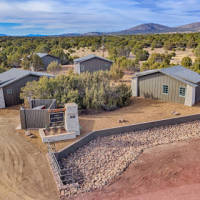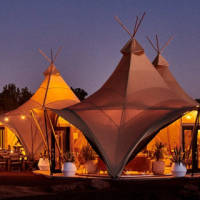The Grand Canyon National Park in Arizona is a colossal and awe-inspiring landscape, a testament to the relentless power of nature. This vast canyon, one mile deep, roughly 10 miles wide, and stretching for 277 river miles, is a must-see on any traveler's list.
The Colorado River, over millions of years, carved its path through the plateau, relentlessly eroding the rock and creating the immense trench we witness today. The exposed layers of the canyon walls are like an open book, revealing over 2 billion years of geological history. Fossils unearthed from this region provide invaluable insights into the Earth's evolution.
The rugged terrain of the Grand Canyon is a haven for outdoor enthusiasts. Day hikes or multi-day backpacking adventures offer opportunities to delve deeper into the canyon and experience its majesty firsthand. With nearly 5 million visitors each year, the Grand Canyon beckons those seeking to explore its wonders and surrounding desert wilderness.
The inspirational Grand Canyon can be explored through three main sections: the remote North Rim, the Inner Gorge, and the more heavily visited South Rim. The South Rim, at an elevation of 7,000 feet, experiences seasonal temperature variations. Summer brings warm weather, averaging 50 to 80 degrees Fahrenheit, but can occasionally exceed 100 degrees. The North Rim, due to its higher elevation, offers slightly cooler temperatures. The Inner Gorge experiences the most intense summer heat but enjoys mild weather throughout the rest of the year. Winters at the Grand Canyon can be extreme, with frequent storms and occasional morning fog that may temporarily obstruct the canyon views. While the South Rim is open year-round, the North Rim is accessible only from mid-May to mid-October. July and August see the highest influx of visitors.
Despite the dramatic changes in climate, the Grand Canyon is home to a surprising variety of wildlife. The rare California Condor soars through the skies while Stellar Jays, ravens, hummingbirds, and Canyon Wrens add to the avian symphony. Bighorn sheep navigate the steep cliffs of the Inner Gorge, while mule deer and elk roam freely throughout the park. Coyotes are commonly spotted, and elusive predators like mountain lions and bobcats may be seen on rare occasions. Squirrels, chipmunks, lizards, and a diverse range of plant life, including over 1,700 plant species and hundreds of fungi variations, complete this vibrant desert ecosystem.
Exploring the Grand Canyon's wilderness is just the beginning. The park offers a variety of outdoor activities, including thrilling river rafting adventures and unique mule trips around the canyon rim. With so much to see and do, the Grand Canyon National Park promises an unforgettable experience for every visitor.



 3941 reviews
3941 reviews


 3787 reviews
3787 reviews





 265 reviews
265 reviews

 2377 reviews
2377 reviews







